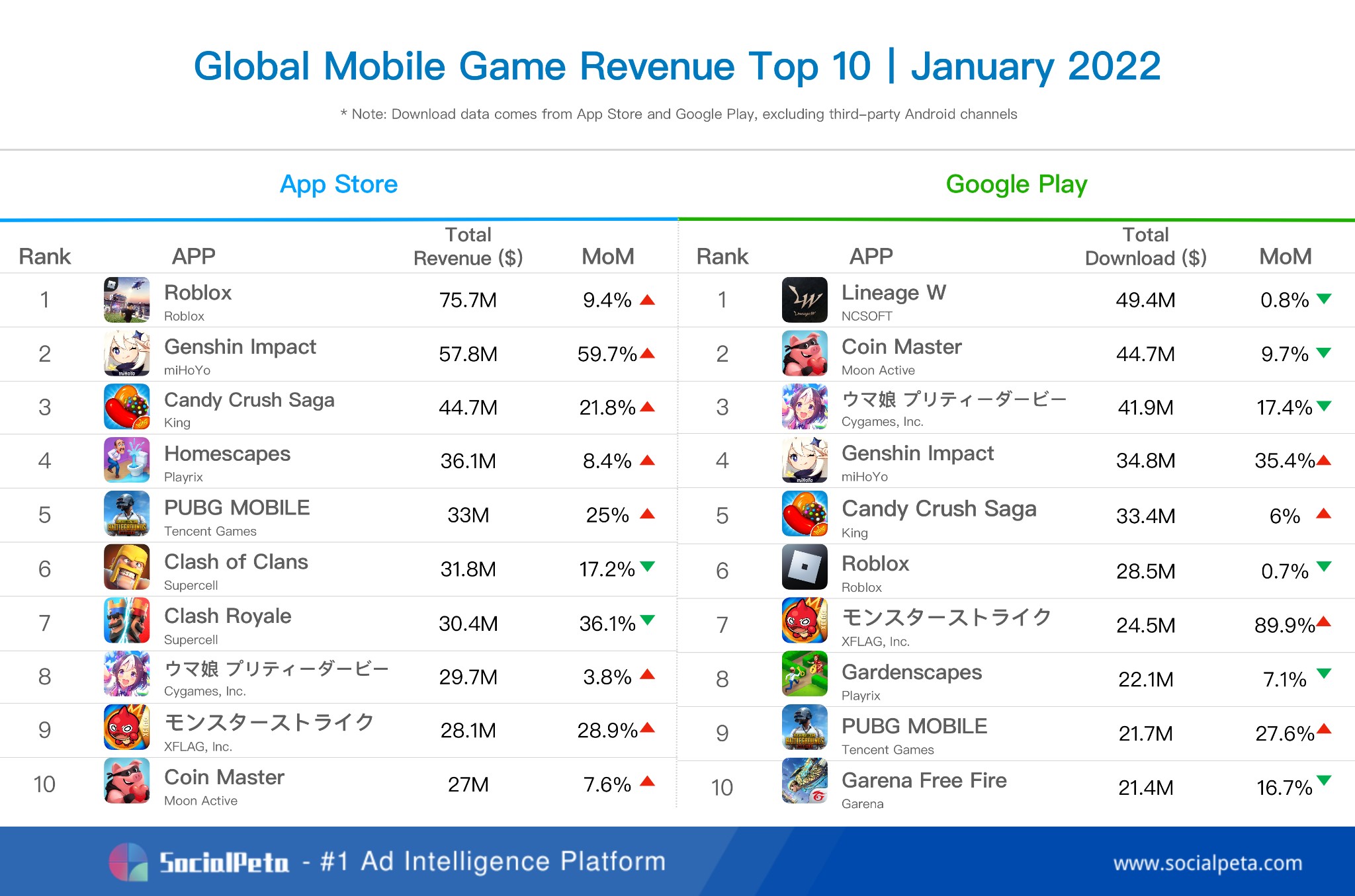Unlocking the Secrets of Mobile Game Advertising
The mobile gaming industry has experienced unprecedented growth in recent years, with millions of users worldwide downloading and playing games on their smartphones and tablets. As a result, mobile game advertising has become a crucial revenue stream for game developers and publishers. However, many are left wondering, how much do mobile game ads pay? The answer lies in understanding the complex world of mobile game advertising, where various factors influence ad revenue.
Mobile game advertising offers a range of benefits, including increased brand awareness, user engagement, and revenue generation. With the average user spending over 4 hours per day on their mobile device, the potential for ad exposure is vast. Moreover, mobile game ads can be highly targeted, allowing advertisers to reach specific demographics and interests. This targeted approach can lead to higher conversion rates and increased revenue for game developers.
Despite the potential, mobile game advertising is a competitive space, with many developers and publishers vying for ad space and revenue. To succeed, it’s essential to understand the different types of mobile game ads, including banner ads, interstitial ads, rewarded videos, and playable ads. Each ad format has its unique characteristics, benefits, and drawbacks, and understanding these differences is crucial for maximizing ad revenue.
As the mobile gaming industry continues to evolve, effective monetization strategies are becoming increasingly important. By understanding the secrets of mobile game advertising, developers and publishers can unlock new revenue streams and stay ahead of the competition. In the following sections, we’ll delve deeper into the world of mobile game advertising, exploring the different types of ads, factors that influence ad revenue, and strategies for increasing revenue.
Understanding the Different Types of Mobile Game Ads
Mobile game advertising offers a range of ad formats, each with its unique characteristics, benefits, and drawbacks. Understanding these differences is crucial for maximizing ad revenue and creating an effective monetization strategy. The most common types of mobile game ads include:
Banner ads are small, rectangular ads that appear at the top or bottom of the screen. They are often used for branding and awareness campaigns, but can also be used for direct response campaigns. Banner ads typically have a low eCPM (effective cost per thousand impressions) rate, ranging from $0.10 to $0.50.
Interstitial ads are full-screen ads that appear between game levels or during natural breaks in gameplay. They are highly engaging and can offer higher eCPM rates than banner ads, ranging from $1.00 to $5.00. However, interstitial ads can also be intrusive and may negatively impact user experience if not implemented correctly.
Rewarded videos are ads that offer users a reward, such as in-game currency or items, in exchange for watching a video ad. They are highly effective for increasing user engagement and can offer high eCPM rates, ranging from $5.00 to $10.00. However, rewarded videos require careful implementation to avoid negatively impacting user experience.
Playable ads are interactive ads that allow users to play a mini-game or demo a game before installing it. They are highly engaging and can offer high eCPM rates, ranging from $5.00 to $10.00. However, playable ads require significant resources to create and implement.
Understanding the different types of mobile game ads is essential for creating an effective monetization strategy. By selecting the right ad formats and implementing them correctly, game developers can increase ad revenue and improve user experience. In the next section, we’ll explore the factors that influence ad revenue and provide an overview of the average eCPM and CPM rates for different ad formats.
How Much Can You Earn from Mobile Game Ads?
The amount of money you can earn from mobile game ads depends on various factors, including the type of ad, ad placement, user engagement, and demographic targeting. Understanding these factors is crucial for maximizing ad revenue and creating an effective monetization strategy.
On average, the eCPM (effective cost per thousand impressions) rate for mobile game ads can range from $0.10 to $10.00, depending on the ad format and targeting options. For example, banner ads typically have a low eCPM rate, ranging from $0.10 to $0.50, while rewarded videos and playable ads can offer higher eCPM rates, ranging from $5.00 to $10.00.
CPM (cost per thousand impressions) rates for mobile game ads can also vary depending on the ad format and targeting options. For example, banner ads typically have a low CPM rate, ranging from $0.10 to $0.50, while interstitial ads and rewarded videos can offer higher CPM rates, ranging from $1.00 to $5.00.
When considering how much do mobile game ads pay, it’s essential to understand the factors that influence ad revenue. Ad format, ad placement, user engagement, and demographic targeting are all critical factors that can impact ad revenue. By optimizing these factors, game developers can increase ad revenue and improve user experience.
For example, ad placement can significantly impact ad revenue. Placing ads in high-traffic areas, such as between game levels or during natural breaks in gameplay, can increase ad visibility and engagement. Additionally, targeting specific demographics, such as age, location, and interests, can increase ad relevance and engagement.
Understanding the average eCPM and CPM rates for different ad formats and targeting options is essential for creating an effective monetization strategy. By knowing how much you can earn from mobile game ads, you can optimize your ad strategy to maximize revenue potential.
Factors Affecting Mobile Game Ad Revenue
Several factors can impact mobile game ad revenue, and understanding these factors is crucial for optimizing ad performance and maximizing revenue potential. Some of the key factors that affect mobile game ad revenue include:
Ad format is a critical factor that can impact mobile game ad revenue. Different ad formats, such as banner ads, interstitial ads, rewarded videos, and playable ads, have varying levels of engagement and revenue potential. For example, rewarded videos and playable ads tend to have higher engagement rates and revenue potential compared to banner ads.
Ad placement is another important factor that can impact mobile game ad revenue. Placing ads in high-traffic areas, such as between game levels or during natural breaks in gameplay, can increase ad visibility and engagement. Additionally, placing ads in areas with high user engagement, such as during gameplay or in menus, can also increase ad revenue.
User engagement is also a critical factor that can impact mobile game ad revenue. Ads that are engaging and relevant to the user tend to have higher click-through rates (CTRs) and conversion rates, resulting in higher revenue. Game developers can increase user engagement by using ad formats that are interactive and immersive, such as rewarded videos and playable ads.
Demographic targeting is another important factor that can impact mobile game ad revenue. Targeting specific demographics, such as age, location, and interests, can increase ad relevance and engagement. Game developers can use demographic targeting to reach their desired audience and increase ad revenue.
Best practices for optimization include using a combination of ad formats, placing ads in high-traffic areas, increasing user engagement, and targeting specific demographics. By optimizing these factors, game developers can increase ad revenue and improve user experience.
For example, game developers can use A/B testing to determine which ad formats and placements result in the highest revenue. They can also use data analytics to track user engagement and demographic targeting, and adjust their ad strategy accordingly.
By understanding the factors that affect mobile game ad revenue, game developers can create an effective monetization strategy that maximizes revenue potential. In the next section, we’ll review popular mobile game ad networks and their payout structures, ad formats, and requirements for publishers.
Top Mobile Game Ad Networks and Their Payouts
There are several mobile game ad networks that offer a range of ad formats, payout structures, and requirements for publishers. Some of the top mobile game ad networks include:
Unity Ads is a popular mobile game ad network that offers a range of ad formats, including banner ads, interstitial ads, and rewarded videos. Unity Ads has a payout structure that is based on the number of ad impressions and clicks, with an average eCPM rate of $1.50 to $3.00.
Vungle is another popular mobile game ad network that specializes in video ads. Vungle offers a range of ad formats, including rewarded videos and playable ads, with a payout structure that is based on the number of ad views and clicks. Vungle’s average eCPM rate is $2.00 to $5.00.
AdMob is a popular mobile game ad network that offers a range of ad formats, including banner ads, interstitial ads, and rewarded videos. AdMob has a payout structure that is based on the number of ad impressions and clicks, with an average eCPM rate of $1.00 to $2.50.
Other popular mobile game ad networks include IronSource, AppLovin, and Tapjoy. Each of these ad networks has its own payout structure, ad formats, and requirements for publishers.
When choosing a mobile game ad network, it’s essential to consider factors such as payout structure, ad formats, and requirements for publishers. By selecting the right ad network, game developers can maximize their ad revenue and improve user experience.
For example, game developers can use Unity Ads for banner ads and interstitial ads, while using Vungle for rewarded videos and playable ads. By diversifying their ad strategy, game developers can increase their ad revenue and reach a wider audience.
In the next section, we’ll discuss strategies for increasing mobile game ad revenue, including ad placement optimization, user segmentation, and ad creative best practices.
Strategies for Increasing Mobile Game Ad Revenue
There are several strategies that can help increase mobile game ad revenue. Here are some actionable tips to boost your ad revenue:
Ad placement optimization is a crucial strategy for increasing mobile game ad revenue. Placing ads in high-traffic areas, such as between game levels or during natural breaks in gameplay, can increase ad visibility and engagement. Additionally, placing ads in areas with high user engagement, such as during gameplay or in menus, can also increase ad revenue.
User segmentation is another effective strategy for increasing mobile game ad revenue. Segmenting users based on demographics, behavior, and preferences can help deliver targeted ads that are more relevant and engaging to the user. This can lead to higher click-through rates (CTRs) and conversion rates, resulting in higher ad revenue.
Ad creative best practices are also essential for increasing mobile game ad revenue. Using high-quality ad creatives that are visually appealing and engaging can help increase ad visibility and engagement. Additionally, using ad creatives that are optimized for mobile devices can help improve ad performance and increase ad revenue.
Another strategy for increasing mobile game ad revenue is to use rewarded videos and playable ads. These ad formats are highly engaging and can offer higher eCPM rates compared to traditional banner ads. Additionally, using rewarded videos and playable ads can help increase user engagement and retention, leading to higher ad revenue.
Finally, leveraging top ad networks can also help increase mobile game ad revenue. Partnering with top ad networks, such as Unity Ads, Vungle, and AdMob, can provide access to a wide range of ad formats, targeting options, and payout structures. This can help increase ad revenue and improve user experience.
By implementing these strategies, game developers can increase their mobile game ad revenue and improve user experience. In the next section, we’ll discuss the importance of tracking and analyzing mobile game ad performance, highlighting key metrics such as eCPM, CTR, and conversion rates.
Measuring and Tracking Mobile Game Ad Performance
Measuring and tracking mobile game ad performance is crucial for optimizing ad revenue and improving user experience. By monitoring key metrics such as eCPM, CTR, and conversion rates, game developers can identify areas for improvement and make data-driven decisions to optimize their ad strategy.
eCPM (effective cost per thousand impressions) is a key metric that measures the revenue generated by an ad campaign. By tracking eCPM, game developers can determine which ad formats and targeting options are most effective and adjust their ad strategy accordingly.
CTR (click-through rate) is another important metric that measures the number of users who click on an ad. By tracking CTR, game developers can determine which ad creatives and targeting options are most effective and adjust their ad strategy to improve user engagement.
Conversion rates are also an important metric that measures the number of users who complete a desired action, such as making a purchase or installing an app. By tracking conversion rates, game developers can determine which ad formats and targeting options are most effective and adjust their ad strategy to improve user engagement and revenue.
There are several tools available for monitoring ad performance, including Google Analytics, Firebase, and Unity Analytics. These tools provide detailed insights into ad performance, including eCPM, CTR, and conversion rates, and can help game developers optimize their ad strategy and improve user experience.
By tracking and analyzing mobile game ad performance, game developers can identify areas for improvement and make data-driven decisions to optimize their ad strategy. This can help improve user experience, increase ad revenue, and maximize revenue potential.
In the next section, we’ll summarize the key takeaways from the article, emphasizing the importance of understanding mobile game ad revenue, optimizing ad performance, and leveraging top ad networks to maximize revenue potential.
Conclusion: Maximizing Your Mobile Game’s Ad Revenue Potential
In conclusion, maximizing your mobile game’s ad revenue potential requires a deep understanding of the various types of mobile game ads, their characteristics, benefits, and drawbacks. By understanding how much do mobile game ads pay, game developers can create effective monetization strategies that optimize ad revenue and improve user experience.
Key takeaways from this article include the importance of understanding mobile game ad revenue, optimizing ad performance, and leveraging top ad networks to maximize revenue potential. By implementing these strategies, game developers can increase their mobile game ad revenue and improve user experience.
Additionally, game developers should focus on creating high-quality ad creatives, optimizing ad placement, and targeting the right audience to maximize ad revenue. By using data analytics and tracking tools, game developers can monitor ad performance and make data-driven decisions to optimize their ad strategy.
By following these best practices and staying up-to-date with the latest trends and innovations in mobile game advertising, game developers can maximize their mobile game’s ad revenue potential and achieve long-term success in the competitive mobile gaming market.
Remember, understanding how much do mobile game ads pay is just the first step in creating an effective monetization strategy. By optimizing ad performance, leveraging top ad networks, and creating high-quality ad creatives, game developers can maximize their mobile game’s ad revenue potential and achieve long-term success.





